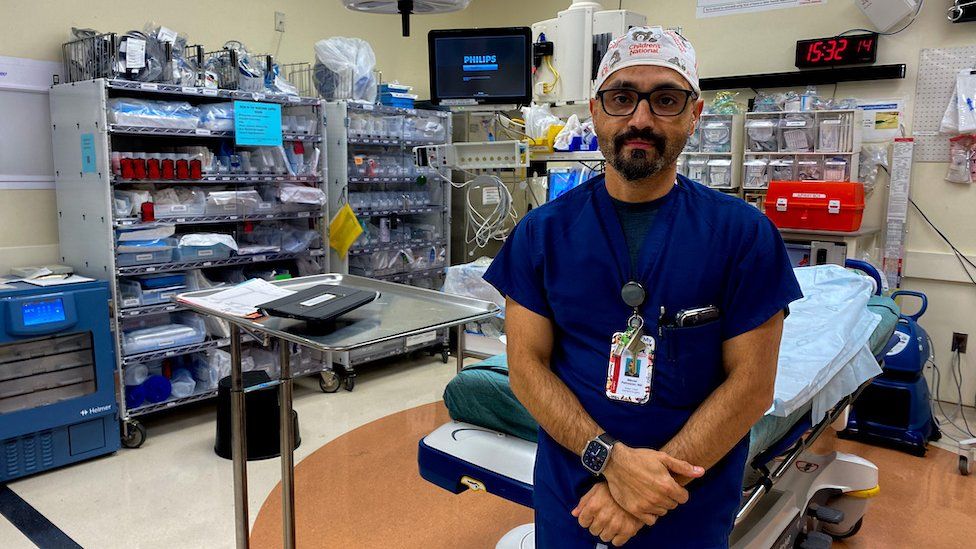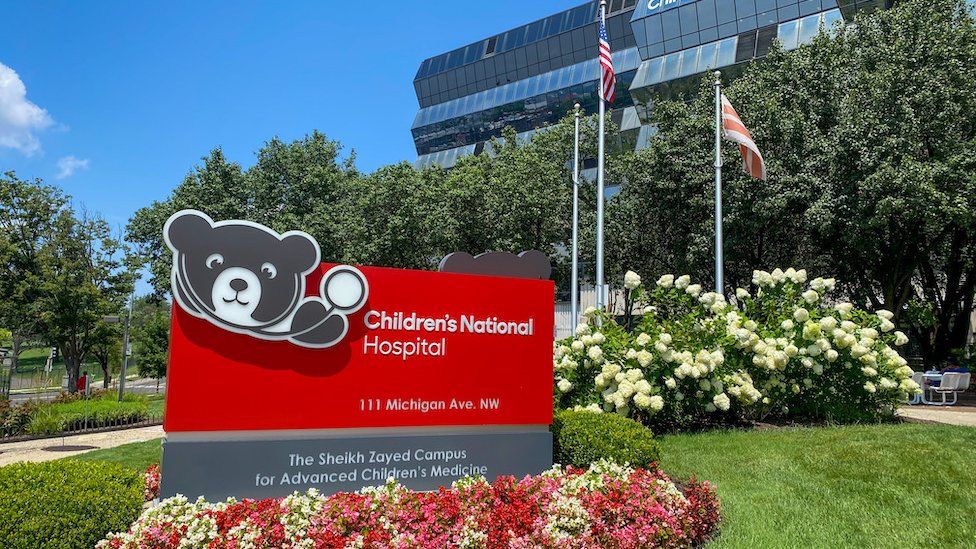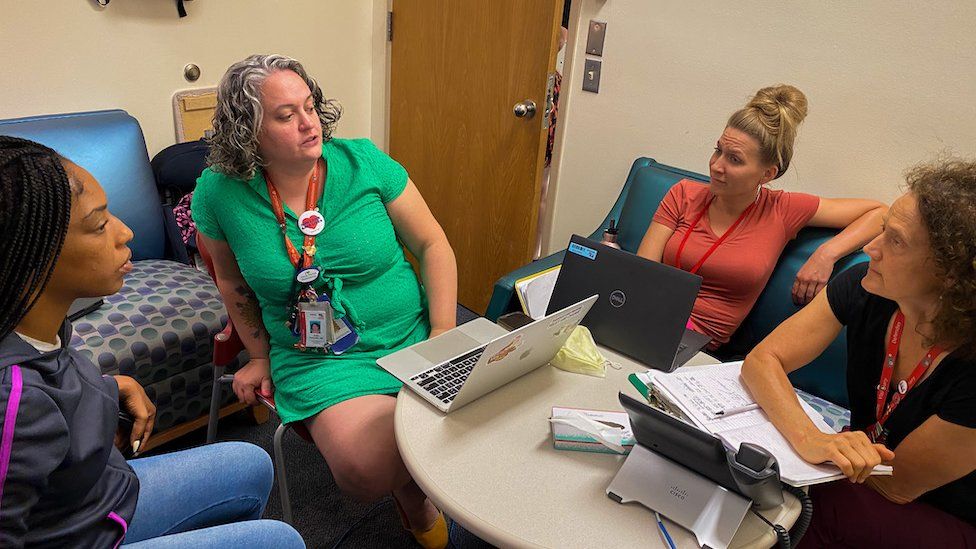
With the number of young people shot by guns on the rise in the US, a children's hospital in the heart of the America's capital is trying to break the cycle of violence.
In the emergency room at Children's National hospital in Washington, DC, hospital beds line the corridors as cartoons blare on television sets.
Nearby, children with the most traumatic injuries are rushed to the trauma room. These are often victims of road traffic accidents, but in recent years, more and more children have arrived with gunshot wounds. Dr Mikael Petrosyan, a paediatric trauma surgeon who has operated on victims as young as three years old, says it's a near daily occurrence.
"It's shocking, because it's a senseless it's to me, it's mind boggling," he says.
Firearms are now the most common cause of death amongst people under 17 years old, outranking road traffic accidents. The rate of gun-related deaths amongst youths has doubled in the last decade, according to a study published in JAMA Network Open medical journal, but it has got even worse since Covid. According to Pew Research gun deaths among under 18's in the US rose by 50% between 2019-2021.
But it's not just the physical wounds though that need treating, say experts who work with gunshot victims. Dr Petrosyan says that children who have been shot before are much more likely to be shot again, often because they go right back to the same places, and the same people, that led to the initial shooting.
"That child not only gets traumatized, physically, but also mentally," he says.
Young victims may need help getting back on the right track - whether that means enrolling in school, finding a new group of friends or getting a job - in order to break the cycle of violence.

Dr Katie Donnelly, an emergency medical physician at National Children's Hospital, likens gun violence to a chronic illness that eventually proves fatal and says its endemic in parts of Washington DC.
"We have lots of families, who will say to us, every one of my children has been shot, or I still have my bullets in my body or his father was killed on the same street corner where he was shot," she told the BBC.
Last year, she launched the hospital's first youth violence intervention program. Instead of treating gun-shot wounds as isolated incidents, the programme takes that horrific moment in a young person's life and turns it into a starting point for change.
Yvonne Doerre, a social worker in DC for nearly thirty years, says there are many reasons behind the rise in youth gun violence. Guns are relatively easy to access, but there is also the lingering effects of the pandemic.
"When you go back to when Covid started, these kids were in fifth or sixth grades [ages 10-12], which are very volatile times in people's lives," she says. Without the structure of having to attend school in person, many young teens stopped attending online classes, and even failed to enrol in secondary school when the time came, she says.
"If you enrol then don't show, they'll look for you, but they never enrolled. You're just persona non grata. You don't exist," Ms Doerre says.
Getting youths enrolled and attending schools is one of the programme's key goals, but keeping them in school is not the only consideration. There is also the question of keeping young people caught up in gang violence away from the environment that made them a victim in the first place.

It's a fact the team has had to experience first hand. One of the first young men to enter the programme had his first gunshot wound when he was 13 years old. He joined the programme after his second shooting, and the team engaged with his family to talk about how best to help him. A few months later, he was shot and killed for a third and final time.
But there are successes. In their weekly meeting the team talked to a teenager who recently managed to get his job back due to the advice they gave him. For Dr Donnelly, there are many markers of success.
"How many Kids did I get back in school? How many kids did a summer work experience, and they're so proud and they show us their little their debit card with their first paycheque on it," Dr Donnelly says. "There are so many factors that affect whether or not a kid gets shot. We're just one piece of the puzzle."
Jewanna Hardy, who runs a youth programme called Guns Down Friday and has been working with the hospital team, agrees.
"Before this programme a kid would just get shot and go home," she says.
"They'd patch you up and you go on about your way."
"But now it's like a team of us, trying to figure out how we can change that kid's life, how we can change that family's life or community's lives."
Related Topics
When a child is shot, doctors must heal more than just bullet holes - BBC
Read More

No comments:
Post a Comment